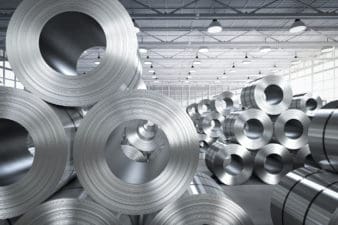After increasing more than 17% over the last year and hitting new all-time highs last month, many investors are beginning to declare that the S&P/TSX Composite Index (TSX:^OSTPX)(TSX:^GSPTSE) has entered bubble territory.
One thing is for sure: the index sure isn’t cheap. The latest reports show the companies in the TSX Composite collectively earned about $260 in the last year, while the index currently sits at 15,496. That puts the index at approximately 60 times earnings.
But that doesn’t tell the whole picture. The TSX Composite is dominated by financial stocks (35% of the index), energy (21%) and materials (12%). Financials are doing fine, but both energy and material stocks have been decimated with non-cash write-offs for years now.
Normalized earnings are closer to $650, which puts the TSX Composite at a much more civilized P/E ratio of less than 24. Canada’s benchmark index also has a cyclically adjusted P/E (CAPE) ratio of just over 20, which factors in earnings over the last 10 years.
That’s expensive when compared to valuations in the past, but it isn’t really when compared to similar markets around the world. Both the United States and Japan have similar trailing P/E ratios, and both have CAPE ratios approaching 25 — a full 25% higher than us here in Canada.
The TSX Composite also offers a dividend yield of nearly 2.7%, using the iShares S&P Capped Cmpst Index Fund (TSX:XIC) as a proxy for the TSX Composite. Both the United States’s and Japan’s benchmark stock indexes offer yields of closer to 2%.
There’s one other important factor that could shoot the TSX Composite Index much higher, even if other stock markets around the world suffer.
Earnings growth
As I touched on earlier, earnings from Canada’s energy and materials sectors have been abysmal for years now. Energy peaked in 2014, while gold and other precious metals have struggled since peaking in 2011.
What happens when these earnings come back?
Remember, one-third of the TSX Composite consists of energy and materials stocks. These stocks also have incredible operating leverage, meaning their costs stay mostly the same even if the price of the commodity skyrockets.
Teck Resources Ltd. (TSX:TECK.B)(NYSE:TECK) is the perfect example of a materials stock with massive operating leverage. Just over a year ago, shares bottomed out at below $5 each as investors were convinced the company was going to go bankrupt.
After the price of metallurgical coal shot up from multi-year lows of US$75 per tonne, Teck shares peaked at $34 each in November before selling off slightly to today’s level of $26.54 each. A tonne of coal peaked at US$308 per tonne in November before falling to US$170, where it sits today.
There’s no guarantee that every oil or materials stock will deliver such a return when those sectors come back. Both have already rallied from their lows. But if we enter another commodities bull market, these stocks could easily head much higher, bringing the index up with it.
The bottom line
Selling because the market is flirting with all-time highs is a silly reason to act. The market hits all-time highs all the time. It’s a fairly normal occurrence.
Investors are also terrible at predicting market tops. Pulling your money out of stocks and into safer vehicles carries opportunity costs. Imagine selling everything and then markets go up another 50%. Those returns are tough to miss out on.
But just because markets aren’t in a bubble doesn’t mean investors don’t have to watch their portfolios. Our newest FREE report can help with that. Check it out!




